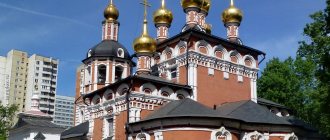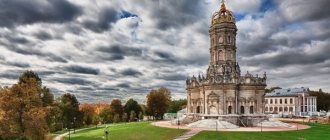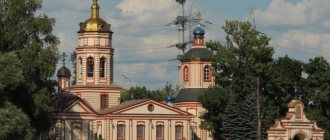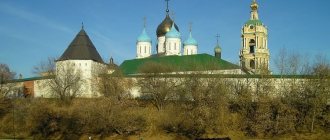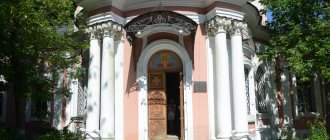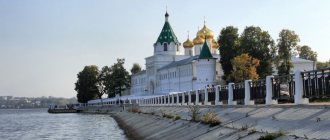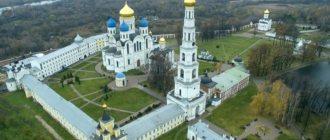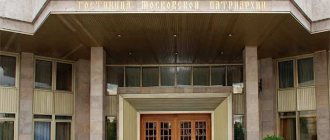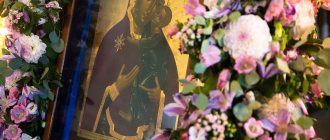The courtyard of the Vsetsaritsa monastery in the Plastunovskaya village is already known far beyond the borders of the Krasnodar Territory. This is not surprising, since it is the only one in the world dedicated to the revered miraculous image of the Mother of God, through whose prayers healing occurs from various ailments, including cancer.
Vsetsaritsa Convent in Krasnodar today
The women's monastery "Vsetsaritsa" is located in Kuban, in Krasnodar. Until 1920, the city was called Yekaterinograd. The monastery is unique in that it is the only one dedicated to the icon of the Mother of God “The All-Tsaritsa”, which people ask for healing from oncology and witchcraft. Several years ago, the Krasnodar region was in 3rd place in the number of cancer diseases.
The sad fact contributed to the creation of the parish, which later received the status of a monastery. The monastery has approved the typicon of the Yekaterinburg Novo-Tikhvin Monastery, which is known for its severity, Byzantine vocals, a school of icon painting, and a workshop for making clothes for priests. All the traditions of the ancient monastery are being successfully implemented in the young community.
The All-Tsaritsa monastery is actively engaged in landscaping and landscaping the territory according to modern principles of landscape design. Ideas are drawn from the design of the ancient monasteries of the Holy Land. On the territory of the temple, shrubs, flowers, birds, and fish harmoniously coexist. Today in Krasnodar there is a population of about 1 million people, and only one monastery functions.
The first miracle from the “Vsetsaritsa”
The “Tsarina of All” showed her first miracle back in the 17th century, when a wonderful man appeared in front of the icon in the temple. He muttered something inaudibly while standing in front of the Holy Icon. At some point, the face of the Mother of God lit up as if by lightning, and this man was thrown to the ground by unknown forces. After he came to his senses, he came to his senses and immediately rushed to confession with tears to the fathers of the monastery. He said that for some time he became interested in magic, did not live with God in his soul, and came here to try his spell on the Holy icons. The miraculous icon “The Queen of All” helped the young man change his views on life, renounce magic and become a pious Christian. After his epiphany and relief from mental burdens, he remained on Holy Athos. Like a cancerous tumor, sorcery, witchcraft, and a passion for magic spread among Christians at that time.
Architect, exterior decoration, architectural ensemble
The Vsetsaritsa Monastery in Krasnodar was created in a harmonious combination of Old Russian and Byzantine styles.
The monastery temple is equipped with two chapels:
- the top one is consecrated in the name of the image of the Mother of God “All-Tsarina”;
- the lower one is consecrated in the name of Equal to the Apostles Nina, a Georgian saint.
Near the main church stands a chapel in the name of the Apostle and Evangelist John. The building for the nuns is built in the shape of Noah's Ark, which is presented in the Bible as a symbol of salvation.
The listed buildings are white. The temple is completed by a blue dome (the color of the Virgin Mary), above it is the Korsun cross. Golden chapel dome
The temple and chapel along the perimeter are decorated with mosaic images made of natural stones. On the northern wall of the temple, facing the cancer clinic, there are the faces of holy doctors: Panteleimon, St. Luke of Crimea, as well as the apostles Peter and Paul.
The architectural ensemble includes the following buildings:
- cave temple of St. Savva the Sanctified;
- Church of the Annunciation of the Mother of God;
- chapel of St. Nicholas;
- chapel in the form of a bell tower. St. George the Victorious.
Vsetsaritsa Monastery, Krasnodar, top view of the complex.
The entire monastery ensemble was erected according to the plan of the architect V.N. Izhikov.
The history of the origin of the women's monastery
It was formed thanks to the efforts of Mother Superior Neonilla. It all started with the construction of a church at an oncology clinic in Krasnodar, which over time received the status of a monastery, and then there was a desire to build a monastery courtyard.
In search of a place for construction, by the providence of God, mother stopped by one of the districts of Krasnodar, where the site of an abandoned gardening partnership was empty. The people who owned the land shares responded to her request to build a monastery here. One part of the gardening territory was given to him as a gift, and he rents the rest.
The courtyard of the Vsetsaritsa monastery is an architectural complex in the village of Plastunovskaya, including:
- Church of the Annunciation of the Blessed Virgin Mary,
- Rev. church Savva the Sanctified,
- three chapels consecrated in honor of Saints Nicholas the Wonderworker, George the Victorious and John the Theologian
The Annunciation Church is a small copy of the Constantinople Cathedral of St. Sofia, and the chapel-belfry of St. George the Victorious externally replicates one of the bell towers of the Moscow Kremlin. The Chapel of St. John the Evangelist is equipped with a baptistery for performing the sacrament of baptism for adults with full immersion. On the days of celebrating the memory of the saint (May 21 and October 9), a prayer service is held here.
Over the course of several years, the following buildings were created on the territory: a nursing corps, an abbot's house, a pilgrimage hotel with a refectory, a kitchen, and a prosphora.
History of construction
The first constructions were made near the oncology center on the initiative of the oncologist surgeon Yu. E. Dudik and his mother, honorary oil worker Kuzmina N. Ya. (later Abbess Neonilla). In the winter of 2001, on the territory for the construction of the temple, Metropolitan Isidore with clergy and believers performed a prayer service and erected a cross. Then they installed the temple slab.
Construction of the monastery continued until the spring of 2003. The first divine service led by the bishop took place on the Feast of the Annunciation - April 7, 2003. Later, a wall with iron gates and towers at the corners was erected around the monastery. Excerpts from the psalms of the prophet David are carved on the walls. The gate arch is crowned with a mosaic icon of the Savior.
Don't miss the most popular article in the section: Metro Nizhny Novgorod. Diagram, map, description.
History[edit]
The creation of the monastery began with the construction of a temple in honor of the icon of the Most Holy Theotokos “Vsetsaritsa”. Stages of the history of this temple:
— On January 12, 2001, His Eminence Metropolitan Isidor of Ekaterinodar and Kuban and the priesthood of the diocese, in the presence of the people, served a prayer service and erected a cross at the site of the construction of the temple in honor of the icon of the Mother of God “The All-Tsarina.”
— In February 2001, the temple slab was laid.
Construction of the temple
— Construction – January 2001 – spring 2003. Built in the Russian-Byzantine architectural style of the 15th century. The model was the Holy Spirit Church of the Holy Trinity Sergius Lavra in Sergiev Posad (only the location of the bell tower was changed and the lower chapel was added). Kokoshniks of ancient shape are filled with icons in the style of Florentine mosaic. The temple is crowned with a blue dome (blue is the color of the Virgin Mary) and the Korsun Cross. The lower chapel of the temple was consecrated in honor of St. Nina, Equal to the Apostles, the enlightener of Georgia. At the same time, next to the temple, a chapel in honor of St. Apostle John the Theologian in the same architectural style and a cell building were built.
- Consecration of the bells - 08/05/2002 by Metropolitan Isidore; The bells were cast in Voronezh by master Oleg Radchenko.
— On April 5, 2003, on Saturday of the Week of the Cross, the Throne of the lower chapel of the church was consecrated in honor of St. Nina, Equal to the Apostles, and the first liturgy was served, and the first festive liturgy was served on April 7, 2003, on the Feast of the Annunciation of the Blessed Virgin Mary. Since then, liturgies have been served daily.
— On September 21, 2003, on the feast of the Nativity of the Blessed Virgin Mary, Metropolitan Isidor of Ekaterinodar and Kuban consecrated the throne of the upper aisle and celebrated the first liturgy in the church in honor of the icon of the Mother of God “The All-Tsarina.” - In 2003 - in the summer of 2004, 18 icons were installed in the style of Florentine mosaic (the technology of Florentine mosaic appeared in Florence in the 14th century, for Kuban this is a rare art): 13 - on the temple, 4 - on the chapel and 1 - on the gate arch. They were made from natural stones - marble, granite, lapis lazuli and other semi-precious stones by Krasnodar artist Shakhbazyan Karapet Gevorkovich. Above the entrance to the temple there is a mosaic icon of the “All-Tsarina”, on the facade above the bell tower there is an image of the Savior with the upcoming Most Holy Theotokos and John the Baptist, and around there are icons of the Archangel Michael and St. George the Victorious with swords and spears. On the eastern side of the temple, above the altar, there are icons of the Most Holy Trinity, St. Nicholas and Equal to the Apostles Nina (the latter is located above the entrance to the lower chapel in honor of this saint); from the south - the Russian venerable wonderworkers - Sergius of Radonezh and Seraphim of Sarov, the Hieromartyr Cyprian and the Martyr Justinia; from the north (towards the oncology clinic) - the holy Supreme Apostles Peter and Paul, and two healers - the great martyr. and the healer Panteleimon and the physician saint Luke of Crimea (Voino-Yasenetsky).
— Arrival from Athos of the miraculous image “The All-Tsarina”, painted for our temple in the Vatopedi monastery (Greece) as an exact copy of the ancient original by icon painter V.A. Polyakov - June 2005. This shrine was consecrated in the Vatopedi monastery by its viceroy, Archimandrite Ephraim, and attached to 180 ancient shrines of this monastery, incl. to the Belt of the Blessed Virgin Mary. The icon “The All-Tsarina” was delivered from Greece to Moscow by Athonite monks, and from the Trinity-Sergius Lavra to Krasnodar by the monks of the Lavra, solemnly greeted at the Krasnodar-1 railway station and delivered in a procession to the monastery, where His Grace Bishop Tikhon served prayer service in honor of this event. In 2006, the icon was placed in a marble icon case built for it with a canopy and columns made of copper with gilding, decorated with enamel. From that time on, the icon was decorated with gifts from grateful pilgrims, because There have been repeated cases of healing from various diseases through prayers before the icon of B.M. “The Tsaritsa”, confirmed by entries in the Guest Book.
Installation mosaic icon
— a 4-tier iconostasis 6 m high was installed, it was made in the Urals from copper with gilding and decorated with enamel, the icons were painted by icon painter V.A. Polyakov - June 2006, before the Feast of the Holy Trinity, the iconostasis was consecrated by Vicar Bishop Tikhon.
- in the temple there is an ark-reliquary with particles of the relics of 33 saints of God, and above the ark there are painted icons of all these saints - April 2007. For the reliquary, the same marble icon case and canopy with columns were built as for the icon “The All-Tsarina”. – in 2007, 50 hanging multi-colored lamps were placed in the temple, modeled on the Churches of the Holy Sepulcher and the Nativity of Christ in the Holy Land. Unquenchable lamps burn around the clock near the Miracle-Working Icon “The All-Tsarina”, above the Icon of the Mother of God “Kazan”, above the Ark with holy relics and above Golgotha.
- a monastery wall was erected with forged gates and inscriptions from the psalms of David and a Florentine mosaic of the Savior on the arch of the gate - 2007-2008.
— in January 2010, 18 ancient icons of the 18th-19th centuries, donated to the monastery’s patron as an oncologist by grateful patients, were restored and placed in the church and cell building; in turn, he donated them to the monastery.
Shrines and relics
Despite its young age, the monastery is rich in shrines.
Among them:
- The miraculous face of the Mother of God “The All-Tsarina” was written from an ancient original, which resides in Vatopedi on Athos. The list was attached to 180 shrines of Vatopedi, including the belt of the Virgin Mary. In Krasnodar, the image was solemnly greeted at the station and carried in a religious procession to the monastery; ancient icons;
- relics of various saints;
- an ark with a piece of Mamre oak;
- icons with a piece of the relics of His Holiness Patriarch Tikhon, St. Dmitry of Rostov, Great Martyr Theodore Tiron;
- holy source of the Tikhvin face of the Mother of God. A miracle happened in 2007. During work to improve the area, an excavator dug into the ground, and springs of water began to flow from there. A font was erected in that place, where all Orthodox Christians receive healing through fervent prayers. Since the miracle occurred on the day of the Tikhvin Icon of the Mother of God - July 9, the source was named in honor of this image;
- especially revered images of the Mother of God: “The Sign”, “The Inexhaustible Chalice”, “Kazan”, “Addition of Mind”, “Pochaev”.
Where is the original kept?
The icon “The All-Tsarina” refers to one of the miraculous images of the Virgin Mary and Child. In all the churches where the lists of icons are located, the “Tsaritsa” is decorated with various precious jewelry, which the believers bring as a token of gratitude. The prayers of those asking reach the Mother of God, and with her mercy she shows many miracles of healing. The original of the miraculous icon “The All-Tsarina” (“Pantanassa” - Greek) is kept in the Vatopedi monastery, located on Holy Mount Athos. For centuries, the icon has been helping all those who suffer. Thousands of pilgrims flock to Holy Athos in the hope of getting rid of terrible ailments through prayer.
Clergy, mentors
The monastery has 6 full-time priests, including 1 hieromonk, who perform divine services daily. At first, the nuns of the monastery confessed to regular priests from among the white clergy. But helping people who have taken the path of serving God can only be done by a person who is himself completely devoted to the Lord. Realizing this, Mother Superior Neonilla looked for an appropriate confessor for the sisters.
For more than 6 years, the young hieromonk Feofan (Dudik), who is a cleric of the Holy Trinity Cathedral, as well as an assistant vice-rector of the Yekaterinburg Theological Seminary, teaches spiritual disciplines, comes to the monastery every week for confession of the sisters.
Schema-Archimandrite Abraham (Reidman), wise in spiritual experience, became the spiritual father of the monastery. In the Orthodox world he is known as a person who dedicated his entire conscious life to God, and as a writer. His books “The Good Part”, “Sobriety”, “The Truth of the Resurrection” and other publications will be useful not only to monastics, but also to the laity.
Akathist
Relatively recently, a Slavic version of the akathist, different from the Greek, was created in honor of the icon “The Tsaritsa”. In the Church of All Saints, every Sunday a prayer service is held and an akathist is read to the icon “The Tsaritsa”, and oil is consecrated to anoint all the sick and suffering, not only from oncology. The akathist to the icon contains many petitions extolling the Mother of God. They call her “The Secret Sweetness for the Suffering,” and “The Destroyer of Cancer,” and “Pointing the Finger to the Cup of Life—the Eucharist.” Every Christian, like a baby to the breast, must fall to the Mother Church and accept all the Divine mysteries. Many people learn about amazing facts when the “Vsetsaritsa” comes to the rescue in the most hopeless cases.
Why does healing occur? This is what the priests of the temple say: the grace of God is sent to everyone who prays according to his faith, work and prayers. On Sunday, a prayer service and akathist are read, after which the oil is blessed and distributed to those in need. To pray to the “All-Tsarina” at home, you can purchase small images of Her in the church shop. On the back is written a prayer with which you need to address the Mother of God. Everyone who attended the akathist assures that they felt the power of the prayer word. Fervent prayer helps to get rid of many troubles and misfortunes, because the Lord said: “I will not cast out those who ask earnestly.” People sing in the akathist: “Rejoice, you who raise from their beds those abandoned by healers. Rejoice, you who burn out cancerous ulcers like a flame.”
Father tells believers that if they expect healing from God, they need to work for it. Read the prayer word and akathist. It is not for nothing that the “Tsarina of All” points her finger to the Holy Eucharist when resorting to Communion, to Confession. After the prayer service, you need to take the sacred oil and anoint it with words of prayer and in faith on the sore spots and forehead of the sick person. Rely on the miraculous power of the Lord.
In every church where there is an icon of the “Tsarina of All,” you can read the chronicle of miraculous healings of those who no longer hoped to receive it from earthly healers, but trusted only in the power of the Lord. There are many stories here about babies and old people, women, men, about cures for cancer even in the later stages of the most hopeless patients. And stories not only about deliverance from a fatal disease, but also from various satanic addictions. In gratitude, people not only leave their stories, but also bring rich gifts to the “Vsetsaritsa”. In each temple, on the icon you can see many decorations left by its grateful children.
Social work, everyday life
The Vsetsaritsa Monastery in Krasnodar receives pilgrims and makes excursions around the property. Full-time priests visit nearby medical institutions to conduct the sacraments of the church for patients, and also fulfill the necessary requirements at home.
The daily life of the monastery traditionally consists of prayer and work. Nuns participate in daily services and have a personal prayer rule.
Labor activity consists of performing the following obediences:
- sing in the choir;
- perform work on the bell tower;
- prosphora oven;
- prepare food for nuns and guests;
- sew vestments;
- wash and iron clothes;
- work in the monastery library;
- take care of flowers, birds, fish, bees;
- maintain order in churches and courtyards;
- work in the garden, in greenhouses;
- conduct excursions for visitors;
- maintain the monastery website.
As a rule, obedience is distributed by the abbess of the monastery in accordance with the abilities and capabilities of the monks.
The appearance of the icon in Russia
In 1995, the Community of Charity of John of Kronstadt, operating at the oncology center for children in Kashirka, asked to graciously provide a copy of the “All-Tsarina” icon so that it would bring healing to sick children. A copy was written with the blessing of Archimandrite Ephraim of Vatopedi. Fulfilling an order from Russia, the monastery icon painters mixed holy relics into the paint for writing and added holy water. The newly painted icon perfectly preserved the purity and beauty of the pristine image of the Virgin and Child.
This is how the icon “The Tsaritsa” ended up in Moscow on August 11, 1995. The first to see her were the children of the “house of sadness” - the oncology department located on Kashirka. Despite the hardships and sorrow that reigned in this institution, here too there was a place for the all-warming love of the Mother of God and the Lord. Facts confirm the miraculous effect of the icon. After sick children took the “Vsetsaritsa”, many noticed improvements in their condition so strong that they could not be attributed only to the effects of drugs. Every week, the priests of the community delivered an icon to sick children and performed a prayer service before the “All-Tsaritsa”, asking for their health.
Patronal holidays
The monastery annually celebrates several patronal holidays:
| Holiday date | Who is it celebrated in honor of? |
| August 31 | Icons of the Mother of God “Vsetsaritsa” |
| January 27 | Equal to the Apostles Nina |
| December 18 | Rev. Savva the Sanctified |
| April 7 | Annunciation of the Mother of God |
| May 22 and December 19 | Saint Nicholas |
| July 9 | Tikhvin image of the Virgin Mary |
Holiday dates are indicated according to the modern calendar.
Interesting facts about the monastery
Before the revolution, not far from the courtyard there was a large convent of the Intercession for women. In the 20s of the 20th century, the monastery was plundered and liquidated by the Bolsheviks. The nuns are killed. Today, the Vsetsaritsa Monastery keeps a brochure about the founding of the Pokrovskaya community in 1899.
Unusual shrines have been created and illuminated in the courtyard:
- an exact copy of Jerusalem Gethsemane;
- Cave of the Apostles (during Lent the incessant psalter is read here);
- stone bas-reliefs “Prayer for the Cup” and “Taking Jesus Christ into custody”;
- in the church of Rev. Savva the Sanctified are myrrh-streaming icons of St. Savva and intact. Panteleimon.
An Orthodox hospital was built in the vicinity of the monastery and illuminated by Metropolitan Isidore in 2022. It will be managed by Honored Doctor Yu. E. Dudik. Today the institution is equipped with medical equipment. Offices are being created and personnel are being searched.
Where is it located, what is in the surrounding area, how to get there
The monastery covers two areas at once. In Krasnodar, near the oncology center, on the street. Dimitrova, 148 is the main temple. The farmstead is located in the Dinsky district. You can get to the monastery by public transport to the University stop.
The courtyard is visible from the federal highway M 4. You need to go to the Plastunovskaya station in the Dinsky district. In the surrounding area you can see the Tricky Market, the Sogdiana cafe and the Golden Crown Hotel. The road to the courtyard leads along the Alley of Repentance, planted with weeping willows. The alley was built in memory of the murdered residents of the Intercession Monastery. The abbess of the holy place is Abbess Neonilla (Kuzmina).
Information for pilgrims
The convent in honor of the image of the Mother of God “Vsetsaritsa” is interesting for pilgrims for its shrines. A monastery is a place with strict discipline. Visits to monasteries should be accompanied by preparation and study of the rules of conduct.
Preparatory activities include:
- taking a blessing from your confessor to visit a holy place;
- observing fasting and prayer rules;
- participation in the sacraments of confession and communion.
Behavior in the monastery should be modest. Loud screaming, laughter, and jokes are not allowed. Women are required to wear long skirts and cover their heads with a headscarf. If you plan to swim in the spring, you need to take a towel and a long shirt with you.
Application to the relics should be done reverently. It is necessary to make two bows to the ground or from the waist with the sign of the cross in front of the shrine, venerate and bow again.
In the courtyard of the monastery of the Icon of the Mother of God “Vsetsaritsa” there is a hotel for pilgrims for 40 people. Applications for visits to the monastery must be left in advance by phone or email, indicating the time of arrival and departure, the number of people, the number of participants in the sacraments of the church.
The convent in honor of the Icon of the Mother of God “Vsetsaritsa” has been officially functioning for about 14 years. Thanks to numerous shrines and a unique source, the young monastery has enormous spiritual significance for the city of Krasnodar, the region and the world.
Author: Mann Elena Sergeevna
Article design: Oleg Lozinsky
Pilgrim[edit]
FOR THOSE WHO WANT TO MAKE A PILGRIMAGE
We can accommodate groups of out-of-town pilgrims in our courtyard
. We accept applications daily for individual and group excursions, for accommodation and meals for individuals and groups of pilgrims by calling 8(861) 227-04-42.
Attention to leaders of pilgrimage groups visiting the monastery!
For the arrival of a pilgrim group to our monastery, you need to receive the blessing of the abbess of our monastery, Mother Neonilla (tel. 8-861-227-04-42) in advance and inform us by e-mail of the dates of arrival and departure, from which city you are coming, the number person in the group and the contact number of the group leader, as well as the desired program for visiting the monastery (possible confession and communion at the liturgy, prayer service, unction, excursion to the central monastery in Krasnodar and the monastery courtyard, immersion in the spring, lunch, overnight stay).
Groups of pilgrims with overnight accommodation and meals are accepted by prior written agreement a month before arrival. We also ask for large groups to be notified in advance about the number of people wishing to confess, receive communion and receive unction.
Monastery pilgrimage service:
Irina Yurievna – cell phone. 8-918-397-34-10.
